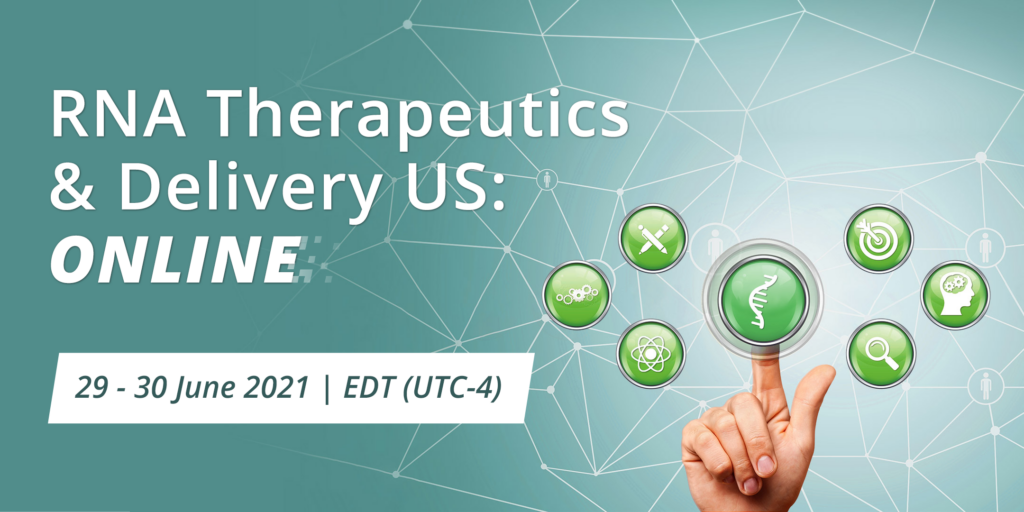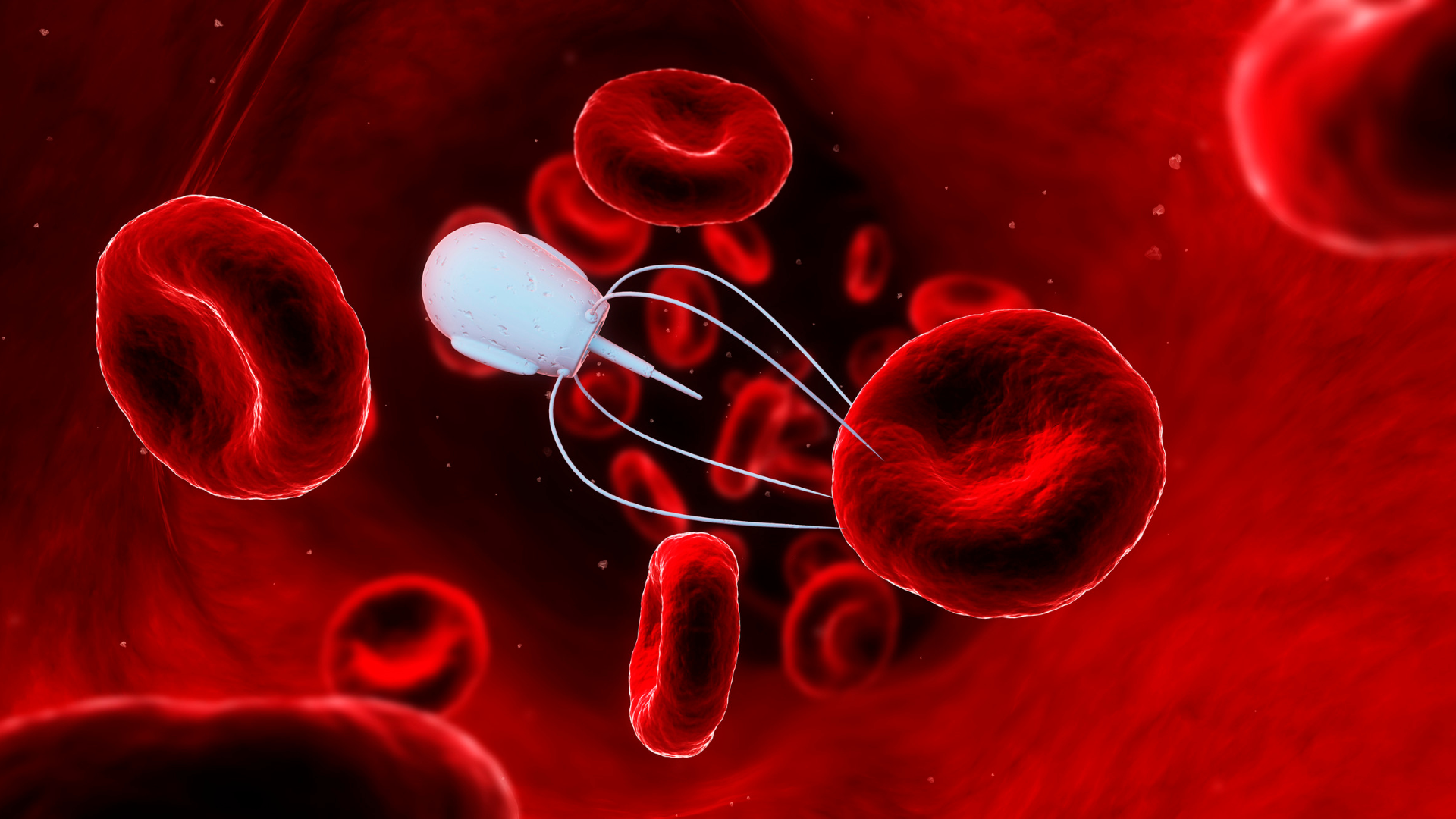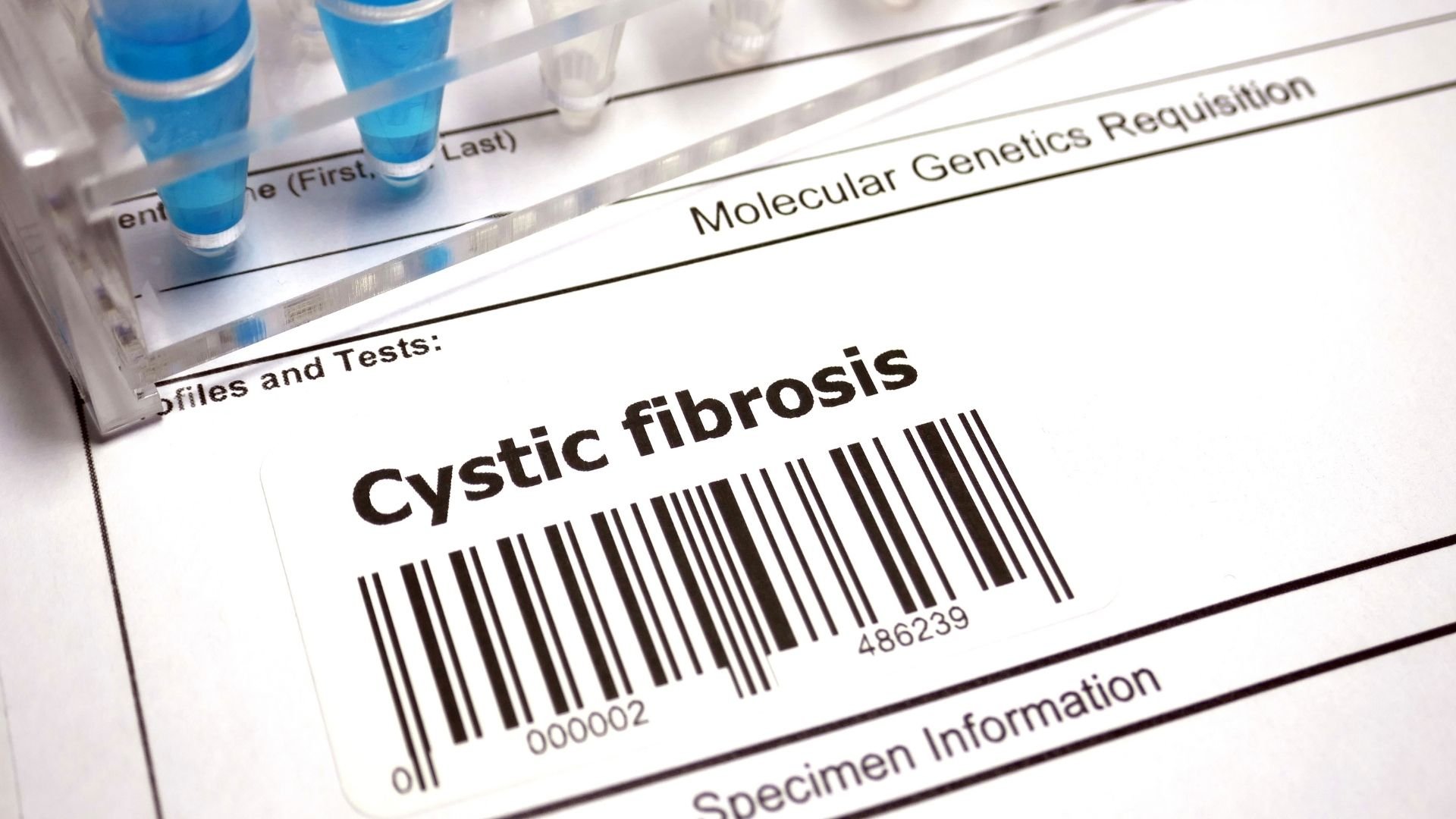Market Trends and Challenges: RNA Therapeutics & Delivery US: Online

This event brought over 600 leading industry minds together to discuss the latest crucial developments in RNA based therapeutics, from mRNA in vaccine development through to microRNA, siRNA, as well as antisense and RNA interference. RNA Therapeutics & Delivery US: Online featured two days of cutting-edge exhibitions and knowledge sharing, consisting of over 30 presentations, roundtables, panel discussions and ask-the-expert Q&As taking place across both days of the event.
RNA Therapeutics & Delivery US: Online t brought over 600 leading industry minds together to discuss the latest crucial developments in RNA based therapeutics, from mRNA in vaccine development through to microRNA, siRNA, as well as antisense and RNA interference. The event featured two days of cutting-edge exhibitions and knowledge sharing, consisting of over 30 presentations, roundtables, panel discussions and ask-the-expert Q&As taking place across both days of the event.

The Event - Key Topic Areas:?
We are pleased to introduce the inaugural RNA event. The field has seen incredible growth in recent years which has only accelerated due to COVID 19 and the influx of funding and interest into mRNA vaccines. Key speakers included Andreas Kuhn (Vice President RNA Biochemistry & Manufacturing at BioNTech), Kari Sweeney Efferen (Director, Analytical & Formulation Development), Charles Bowerman (Scientific Associate Director at Moderna), Patrick Baumhoff (Vice President Formulation & Delivery at CureVac), Richard Geary (Senior Vice President of Drug Development at Ionis Pharmaceuticals) and Frank DeRosa (Chief Technology Officer at Translate Bio).
During the first half of the event, our industry leaders focused on RNA formulation and development, topics included the challenges of mRNA characterisation, increasing immunogenicity and prediction, outsourcing development, as well as insights into stability and CMC.
In the second half of the day, topics were split into two parts, one focused on delivery and the other therapeutic discovery. Key topics this year were the delivery of self-replicating RNAs, alternative routes and tissue targeting, nano, polymer and lipid-based delivery, interference and antisense technologies, viral vectors, and, of course, the latest developments in delivery agents. The final topics included therapeutic discovery, RNA as drug targets, novel drug discovery tools, RNA in vaccination and Covid-19 research and sharing of several important case studies.
Market Trends:
RNA development and delivery is a vast and diverse industry. Every year advancements are changing the pharmaceutical industry change and opening new doors for patients. Three areas this year are attracting increased attention.
RNA Sequencing:
Recent technological developments, including direct RNA sequencing, may ease some constraints of current RNA approaches and enable new research paths into transcriptomics. RNA sequencing can now be used to study many aspects of RNA biology, including single-cell gene expression, translation, and RNA structure. Several new applications are being investigated, such as spatial transcriptomics. In addition, new technologies such as long read and direct RNA sequencing are unearthing new information on the fundamental workings of RNA and furthering our understanding of biology.
Democratisation: Opportunities for Emerging Companies
RNA innovation has been rapid and is comparatively low cost. Much of the development of work can be outsourced while inventors retain ownership. This provides opportunities for small companies and academic research groups to advance to clinical trials without the burden of a large corporate partner losing control of the equity in their company. This setup also allows exploration of new disease types previously deemed too expensive to move forward on due to low occurrence. Examples of include Arrakis Therapeutics and Secarna.
Arrakis Therapeutics is a US start-up creating RNA-targeting biopharmaceuticals. Their focus areas are rare diseases, cancer treatment and dyslipidaemia. They are using small molecules drugs, binding to targets previously thought undruggable. These drugs work by translation and splicing of RNA.
Secarna is another start-up based in Germany that specialise in antisense therapies. They have made great strides in thrombocytopenia, liver toxicity, and nephrotoxicity. Their proprietary LNAplus drug discovery platform identifies antisense oligonucleotides for preclinical and clinical development. They also created Oligofyer, a bioinformatics platform that facilitates the rational design of antisense oligonucleotides and works in tandem with LNAplus.
RNA Gene Editing
CRISPR editing was once heralded as the next big technology in medicine. Unfortunately, it has proved more difficult than originally thought. Cas9, an enzyme used in CRISPR gene-editing, has been found to trigger immune responses and potentially cause unintentional changes to the genome that would be irreversible. RNA editing is generally less permanent as cells can degrade RNAs. This could enable clinicians to make temporary changes that remove mutations in proteins, stop their production or target changes in individual organs and tissues. As a result, RNA editing is fast becoming a key area of interest. Since 2019, researchers have published over 800 papers on the topic.
Challenges:
While RNA treatments and vaccines are growing in size and importance, many aspects are still in their infancy. Nevertheless, scientists are working to overcome the many obstacles still in the path of broader adoption.
siRNA Delivery
In 2018 the FDA approved the first therapeutic small interfering RNA (siRNA), Onpattro. It enabled the treatment of nerve damage caused by hereditary transthyretin-mediated amyloidosis. Theoretically, siRNAs can silence the expression of any target gene by switching the sequences.
While siRNA has the potential to treat previously untreatable diseases, delivery remains the most significant obstacle. RNA researchers have to work out how to shield the therapeutic double-stranded RNA so that they remain stable and avoid degradation by the immune. Even if this is achieved, the RNA still has to target the intended organ and cell successfully.
RNA Editing
The most crucial challenge to safe RNA editing is managing off-target editing. Editing of nontargeted transcripts can invoke undesired changes in the transcriptome, including changes in codons, splice sites, and transcript stability. These could cause deficiency, overproduction, or misfunction of proteins and potential generation of immunogenic epitopes.
Currently, robust RNA editing of disease-causing endogenous transcripts has been displayed using overexpressed ADAR2, ?NADARs, and MCP-ADARs. However, these approaches can result in off-target editing. While the genomically integrated SNAP-ADAR system enables greater specificity compared to other RNA editing approaches, genomic integration of the SNAP-ADAR is not feasible for in vivo gene therapy. Furthermore, even if SNAP-ADAR can offer the best specificity when overexpressed, the BG-adRNA cannot be genetically encoded and will require additional work for synthesis and delivery. Work is currently being undertaken to examine how limiting the duration of enzyme and adRNA expression, use of wild type deaminase domains, and nuclear sequestration of these RNA editing enzymes can limit off-target editing.
Barriers to Wide-Spread mRNA Vaccine Usage
mRNA-based vaccines have incredible potential, but thus only COVID-19 vaccines have received emergency approval. Much of the original research into mRNA vaccines centred around cancer treatment. Effective intracellular delivery of mRNA to the cytosol continues to be a barrier for other use cases. The large molecular weight of RNA can impair the permeation of mRNA across cellular membranes. mRNA is also inherently unstable and easily degradable. Therefore, novel delivery systems are imperative for the intracellular delivery of mRNA.
Different methods have been explored to improve RNA delivery. Examples include microinjections, RNA patches, gene gun-based administration, protamine condensation, and encapsulation of RNA in nanoparticles consisting of a mix of lipids and polymers. However, further research into diverse delivery platforms is still key to unlocking the full potential of mRNA vaccines despite the success of Pfizer and Moderna’s COVID-19 Vaccines.
Conclusion:
The RNA industry is expanding and increasing in importance, but is just one of many new techniques for cancer treatment. Next year's event will feature presentations on mRNA Therapeutics and vaccines, silencing via siRNA and antisense oligonucleotides, mRNA editing and repair, novel delivery methods and much more. One of the key advantages of RNA-based therapy the ability to target protein-coding and noncoding RNAs. A further advantage of RNA therapy is that researchers can design new drugs rapidly and create long-lasting effects, particularly when using siRNAs for RNA drugs.
We are witnessing extraordinary progress in RNA therapy and RNA research. This new class of RNA-based drugs have the potential to treat diverse diseases that currently have no available treatments. If you would like to join us or are interested in other aspects of drug formulation and delivery, please take a look at our upcoming events and webinars.






